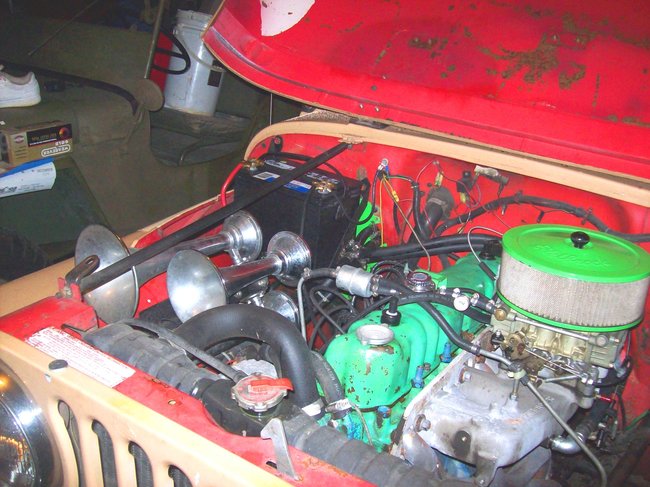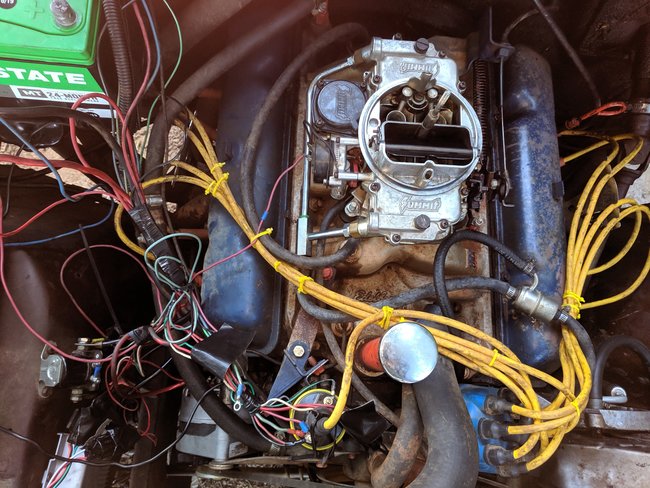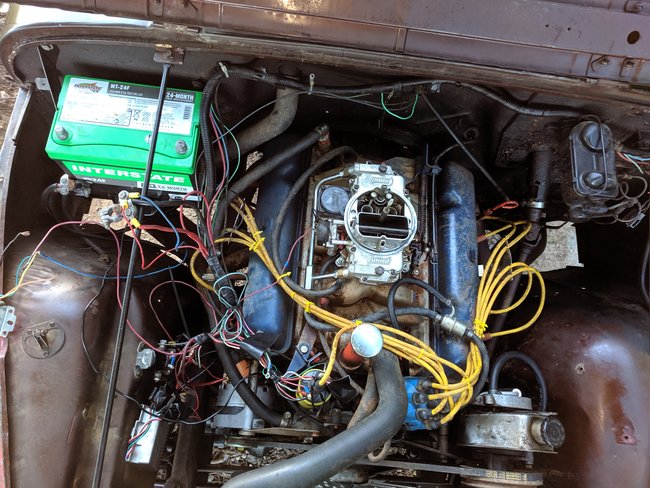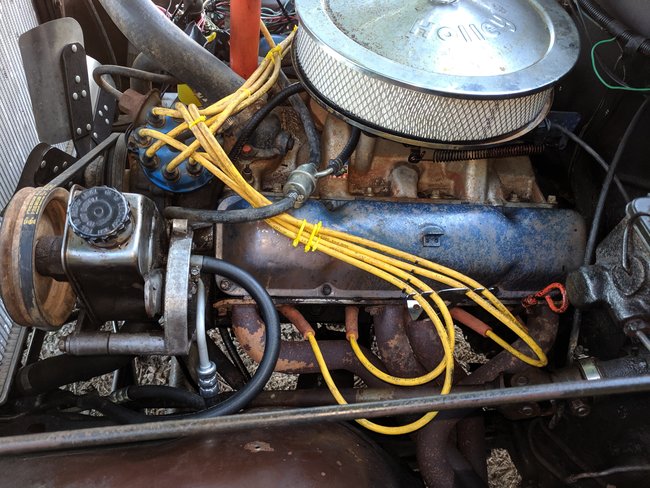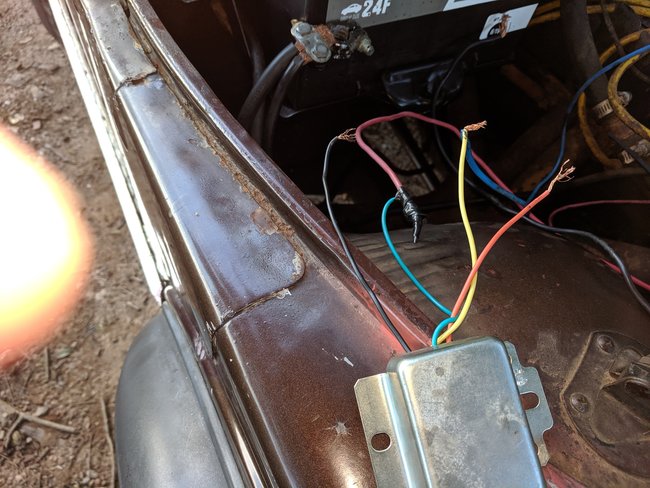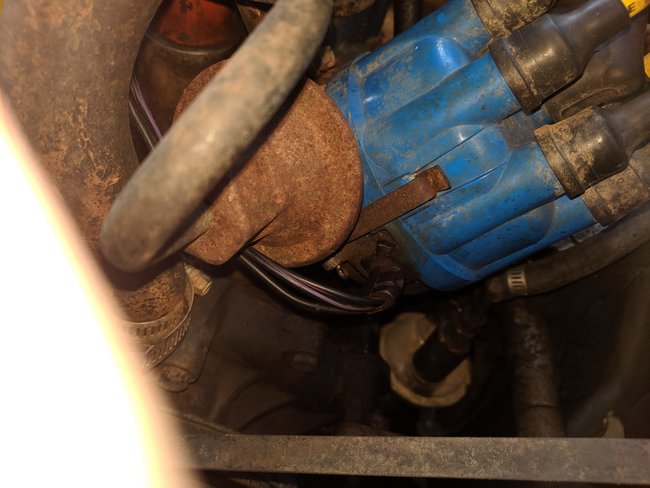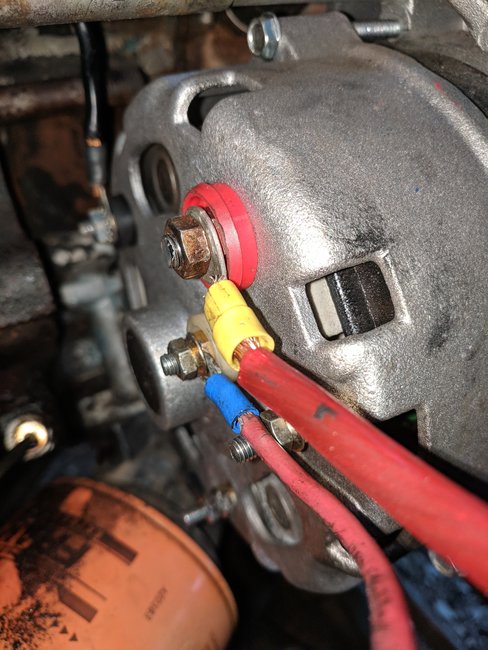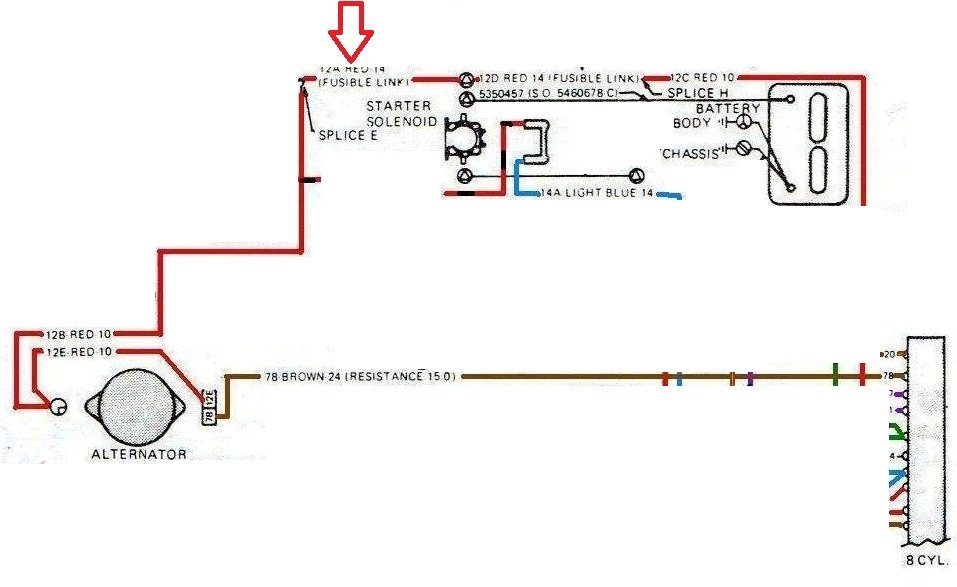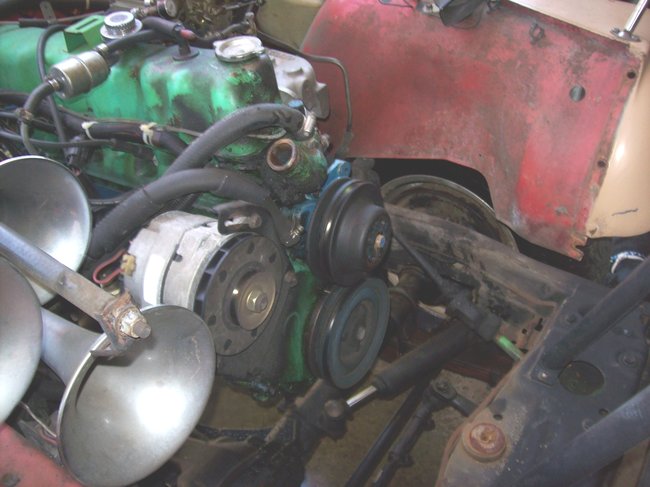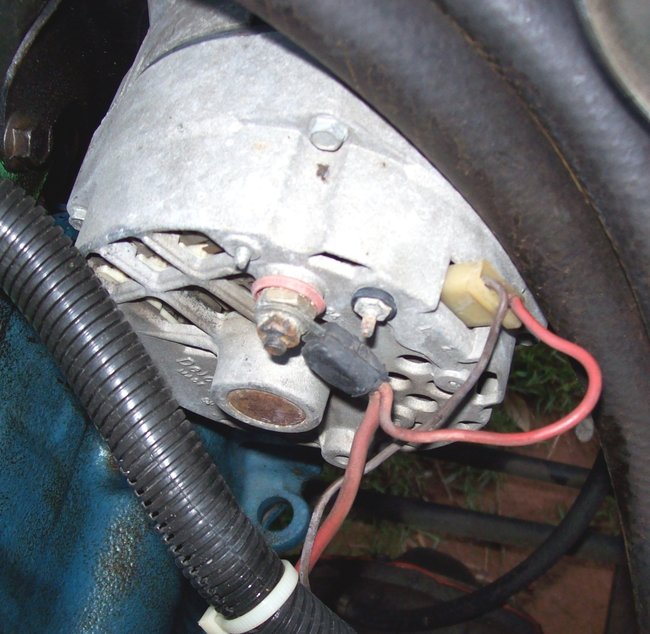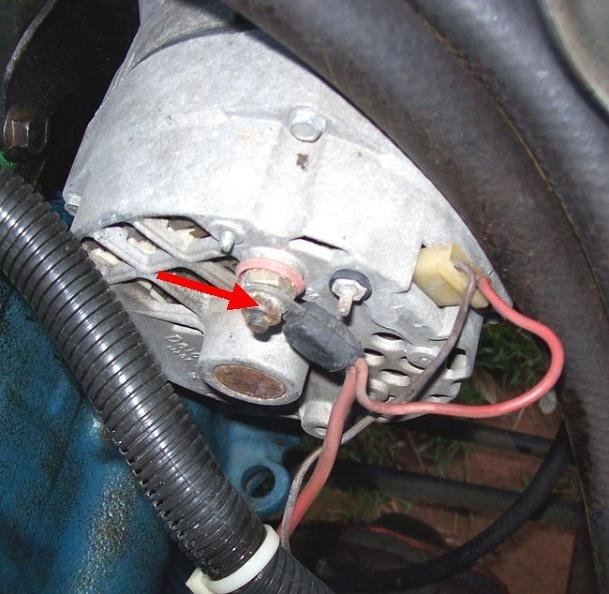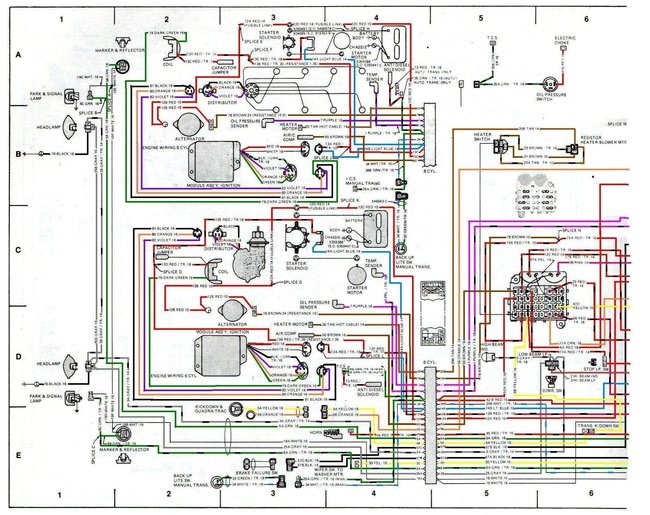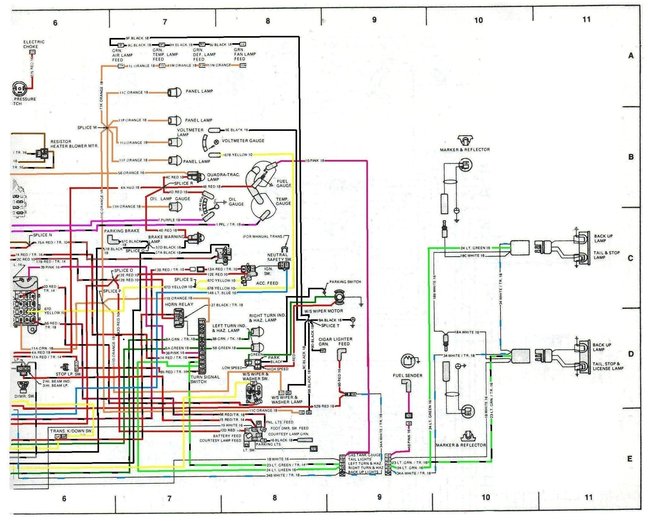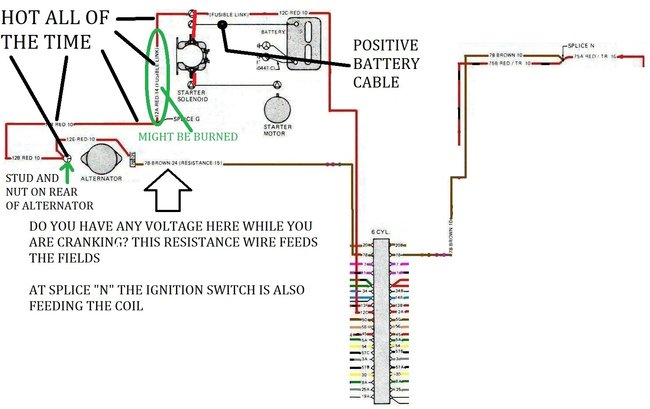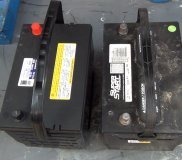That's a common GM generator. If you're referring to the brown wire, that goes to the dash "Battery" warning light. With the ignition switch on, current flows through the bulb, then through that brown wire into the internal voltage regulator. You'll find the remaining approximately two volts at terminal 2. That is the turn-on signal that tells the regulator to turn on and start allowing current to flow through the generator's rotating field winding.
Besides the stationary coil of wire and the magnet, (electromagnet, in this case), the third needed ingredient is movement between them, to generate a voltage mechanically. That means the engine has to be running and the belt is spinning the field winding. At that point, an output voltage and current is produced. Part of that output current is tapped off and goes back to the regulator to tell it the charging system is working. When the regulator sees that, it puts 12 volts back out on the brown wire. With that 12 volts on one side of the bulb, and the battery's voltage on the other side of the bulb, the difference in voltage is near 0 volts, so the warning light turns off.
A common problem is a break in the circuit for that brown wire. A burned-out bulb is not sufficient to cause a no-charge condition because there is also a 510 ohm resistor on the instrument cluster to pass the start-up current in case the bulb has burned out. If there is a break in the brown wire, the regulator will not get the 12 volt signal to turn on, however, there is often enough residual magnetism in the core of the rotating field winding that it can self-excite and get a little output current started. All it takes is a tiny tickle of current, then the magnetic field will build and build on its own until it's strong enough for the regulator to step in. The symptom is typically a no-charge condition at first while the engine is idling, and it can take a few seconds to many minutes before charging starts. It has a much better chance of starting when engine speed is raised. Once charging starts, it will continue until the engine is stopped.
Terminal 1 is where the regulator senses system voltage. In this case it is tied right to the output wire which is tied to the positive battery cable. For some custom applications, that red jumper wire is placed internally inside the generator. The reason for having that terminal available outside is in some vehicles they want to measure system voltage at some remote point rather than right at the battery. For those vehicles that red wire will come from someplace else that still has full system voltage. On newer trucks in particular, GM had a real bad problem with flickering digital instrument clusters. To reduce that flicker, they tied this red wire right to the 12-volt feed at the cluster. It was more important to hold the voltage steady right there. The result was a slight fluctuation in system voltage at other places on the truck, but those other places, such as head lights, computers, and the radio, are not so susceptible to those fluctuations. It wasn't bad enough to notice, for example, flickering head lights.
As a temporary measure, when you're stranded with a break someplace in the brown wire, and the generator won't start up on its own, just use a stretched-out paper clip, or needle-nose pliers to momentarily touch terminals 1 and 2 together. That will put voltage on terminal 2 which will get charging started. From then on, the small input current is supplied by tapping off a small sample of the output current, so the system will keep right on running until you stop the engine.
Thursday, August 15th, 2019 AT 4:16 PM

